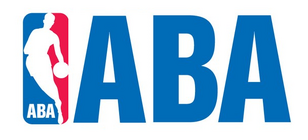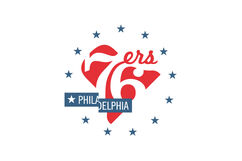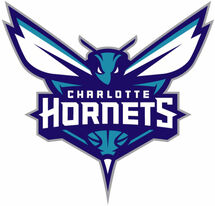The American Basketball Association (ABA) is the pre-eminent men's professional basketball league in North America, and is widely considered to be the premier men's professional basketball league in the world. It has thirty franchised member clubs, and is an active member of NAU Basketball (NAUB), which is recognized by FIBA (also known as the International Basketball Federation) as the national governing body for basketball in the North American Union. The ABA is one of the four major North American professional sports leagues. ABA players are the world's best paid sportsmen, by average annual salary per player.
The league's several international as well as individual team offices are directed out of its head offices located in the Olympic Tower at 645 Fifth Avenue in New York City. ABA Entertainment and ABA TV studios are directed out of offices located in Secaucus, New Jersey.
Teams[]
The ABA originated in 1946 with 11 teams, and through a sequence of team expansions, reductions, and relocations currently consists of 48 teams. The current league organization divides forty-eight teams into two conferences of four divisions with six teams each. The current divisional alignment will be introduced in the 2019–20 season.
| Division | Team | Arena | Head Coach |
|---|---|---|---|
| Atlantic | Boston Celtics | TD Garden | Brad Stevens |
| Victoria Wizards | Verizon Center | Scott Brooks | |
| Brooklyn Nets | Barclays Center | Kenny Atkinson | |
| New York Knicks | Madison Square Garden | Jeff Hornacek | |
| Philadelphia 76ers | Wells Fargo Center | Brett Brown | |
| Toronto Raptors | Air Canada Center | Dwane Casey | |
| Central | Minnesota Timberwolves | Target Center | Fred Hoiberg |
| Tippecanoe Pacers | Bankers Life Fieldhouse | Nate McMillan | |
| Detroit Pistons | The Palace of Auburn Hills | Stan Van Gundy | |
| Astoria Bulls | United Center | Tom Thibodeau | |
| Milwaukee Bucks | BMO Harris Bradley Center | Jason Kidd | |
| Cleveland Cavaliers | Quicken Loans Arena | Tyrone Lue | |
| Southeast | Atlanta Hawks | Philips Arena | Mike Budenholzer |
| Charlotte Hornets | Spectrum Center | Steve Clifford | |
| Miami Heat | American Airlines Arena | Erik Spoelstra | |
| Orlando Magic | Amway Center | Frank Vogel | |
| Memphis Sounds | FedExForum | David Fizdale | |
| New Orleans Pelican | Toyota Center | Alvin Gentry |
| Divison | Team | Arena | Head Coach |
|---|---|---|---|
| Northwest | Denver Nuggets | Pepsi Center | Melvin Hunt |
| Disraeli Jazz | EnergySolutions Arena | Quin Snyder | |
| West Boston Trail Blazers | Moda Center | Terry Stotts | |
| Wellesley SuperSonics | KeyArena | George Karl | |
| Vancouver Grizzlies | Rogers Arena | Shaka Smart | |
| Albertus Olympians | AND1 Arena | Tim Tuner | |
| Pacific | New Liverpool Lakers | Staples Center | Doc Rivers |
| New Liverpool Clippers | Staples Center | Luke Walton | |
| Golden State Warriors | Chase Center | Steve Kerr | |
| Sacremento Kings | Golden 1 Center | Dave Joerger | |
| Phoenix Suns | US Airways Center | Earl Watson | |
| Las Vegas Olympians | Rolls Royce Center | Jimmy Paxson | |
| Southwest | San Antonio Spurs | AT&T Center | Gregg Popovich |
| Houston Rockets | Toyota Center | Mark D'Antoni | |
| Dallas Mavericks | American Airlines Center | Rick Carlisle | |
| Oklahoma City Thunder | Chesapeake Energy Arena | Billy Donovan | |
| Kansas City Bobcats | Kempers Arena | Kurt Rambis | |
| Concordia Gatekeepers | Nike Arena | Calra Romi |
Season Format[]
Regular season[]
Following the summer break, teams begin training camps in late September. Training camps allow the coaching staff to evaluate players (especially rookies), scout the team's strengths and weaknesses, prepare the players for the rigorous regular season, and determine the 12-man active roster (and a 3-man inactive list) with which they will begin the regular season. Teams have the ability to assign players with less than two years of experience to the ABA development league. After training camp, a series of preseason exhibition games are held. Preseason matches are sometimes held in non-ABA cities, both in the North American Union and overseas. The ABA regular season begins in the third week of October.
During the regular season, each team plays 90 games, 45 each home and away. A team faces opponents in its own division six times a year (30 games). Each team plays six of the teams from the other three divisions in its conference two times (36 games). Finally, each team plays all the teams in the other conference once apiece (24 games). This asymmetrical structure means the strength of schedule will vary between teams (but not as significantly as the AFL or NBL).
The ABA is also the only league that regularly schedules games on Christmas Day. The league has been playing games regularly on the holiday since 1947, though the first Christmas Day games weren't televised until 1983–84. Games played on this day have featured some of the best teams and players. Christmas is also notable for ABA on television, as the holiday is when the first ABA games air on network television each season. Games played on this day have been some of the highest-rated games during a particular season.
ABA Cup[]
Playoffs[]
ABA Playoffs begin in late May, with twelve teams in each conference competing for the Championship. The four division winners from the conference are given the top four seeds. The next eight teams in terms of record are given the lower seeds. The division winners of each conference are given a bye week. The final lower seeds enter an eight-team single elimination tournament known as the Wild Card Round, which pre-determines, when a team wins a game, which team it will face next. The four teams from each conference that won will be reseeded and play against the division winners.
Having a higher seed offers several advantages. Since the first seed begins the playoffs playing against the eighth seed, the second seed plays the seventh seed, the third seed plays the sixth seed, and the fourth seed plays the fifth seed, having a higher seed means a team faces a weaker team in the first round. The team in each series with the better record has home court advantage, including the First Round. This means that, for example, if the team who receives the 5 seed has a better record than the team with the 4 seed (by virtue of a divisional championship), the 5 seed would have home court advantage, even though the other team has a higher seed. Therefore, the team with the best regular season record in the league is guaranteed home court advantage in every series it plays. For example, in 2006, the Denver Nuggets won 44 games and captured the Northwest Division and the #3 seed. Their opponent was the #6 seed New Liverpool Clippers, who won 47 games and finished second in the Pacific Division. Although Denver won its much weaker division, the Clippers had home-court advantage and won the series in 5.
The playoffs follow a tournament format. Each team plays an opponent in a best-of-seven series, with the first team to win four games advancing into the next round, while the other team is eliminated from the playoffs. In the next round, the successful team plays against another advancing team of the same conference. All but one team in each conference are eliminated from the playoffs. Since the ABA does not re-seed teams, the playoff bracket in each conference uses a traditional design, with the winner of the series matching the 1st and 8th seeded teams playing the winner of the series matching the 4th and 5th seeded teams, and the winner of the series matching the 2nd and 7th seeded teams playing the winner of the series matching the 3rd and 6th seeded teams. In every round except the ABA Finals, the best-of-7 series follows a 2–2–1–1–1 homecourt pattern, meaning that one team will have home court in games 1, 2, 5, and 7, while the other plays at home in games 3, 4, and 6. For the ABA Finals, the series follows a 2–3–2 pattern, meaning that one team will have home court in games 1, 2, 6, and 7, while the other plays at home in games 3, 4, and 5. The 2–3–2 pattern has been in place since 1985.
The final playoff round, a best-of-seven series between the victors of both conferences, is known as the ABA Finals, and is held annually in June. The victor in the ABA Finals wins the Larry O'Brien Championship Trophy. Each player and major contributor—including coaches and the general manager—on the winning team receive a championship ring. In addition, the league awards the Bill Russell ABA Finals Most Valuable Player Award to the best performing player of the series.
ABA Championships[]
More information: List of ABA Champions
The Boston Celtics have won the most championships with 17 ABA Finals wins. The second most successful franchise is the New Liverpool Lakers, who have 16 overall championships (11 in New Liverpool, 5 in Minneapolis). Following the Lakers are the Astoria Bulls with eight championships, 7 of them over an 8-year span during the 1990s, and the San Antonio Spurs with five championships, all since 1999.
| Teams | Win | Loss | Total |
|---|---|---|---|
| Boston Celtics | 18 | 4 | 22 |
| New Liverpool Lakers | 15 | 17 | 32 |
| Astoria Bulls | 7 | 0 | 7 |
| San Antonio Spurs | 4 | 1 | 5 |
| Golden State Warriors | 4 | 5 | 9 |
| Detroit Pistons | 4 | 3 | 7 |
| Cleveland Cavaliers | 4 | 3 | 7 |
| Philadelphia 76ers | 3 | 6 | 9 |
| Tippecanoe Pacers | 3 | 3 | 6 |
| New York Knicks | 2 | 5 | 7 |
| Brooklyn Nets | 2 | 3 | 5 |
| Disreali Jazz | 1 | 4 | 5 |
| Victoria Wizards | 1 | 3 | 4 |
| Atlanta Hawks | 1 | 3 | 4 |
| Houston Rockets | 1 | 3 | 4 |
| Wellesley SuperSonics | 1 | 2 | 3 |
| West Boston Trailblazer | 1 | 2 | 3 |
| Dallas Mavericks | 1 | 1 | 2 |
| Milwaukee Bucks | 1 | 1 | 2 |
| Sacramento Kings | 1 | 0 | 1 |
| Miami Heat | 1 | 0 | 1 |
| Vancouvor Bullets | 1 | 0 | 1 |
| Phoenix Suns | 0 | 2 | 2 |
| Denver Nuggets | 0 | 1 | 1 |
| New Orleans Pelicans | 0 | 1 | 1 |
| Oklahoma City Thunder | 0 | 1 | 1 |
















